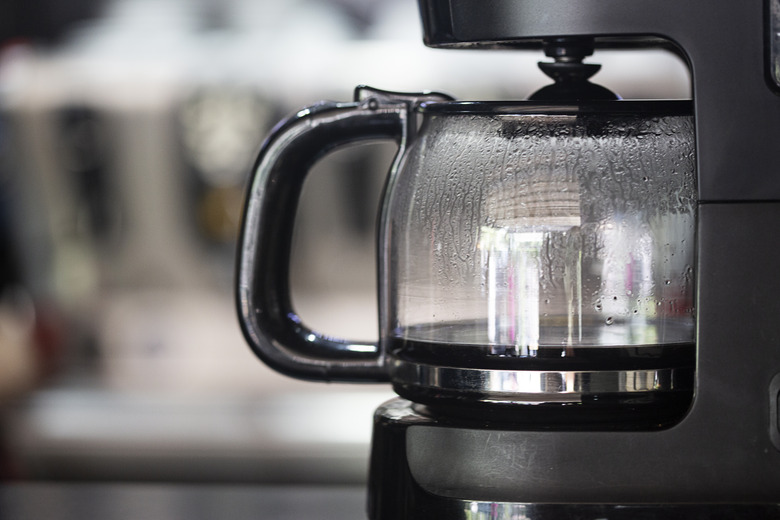Homemade Coffee Descaling Cleaner
Each time you make a hot pot of coffee, the boiling water leaves behind a calcium carbonate deposit called scale or limescale. The scale appears as a hazy, white film, and builds up over time. This built-up scale slows your coffeemaker's brew speed and negatively affects taste. Instead of turning to commercial descaling cleaners, you can make your own equally effective homemade coffee descaling solution at a fraction of the cost.
Coffee Maker Descaling Solution Ingredients
Household soaps and cleansers barely put up a fight against limescale, which you must dissolve with an acid for complete removal. Both vinegar and citric acid have appropriate acidity levels for the job: not so high that the solution can damage the machine's inner parts, but not ineffectively low either.
Citric acid, available at health food and candy wholesale stores, smells better during the descaling process and requires only one or two subsequent water-only cycles to rinse away the cleaner residue. Instead of citric acid, you can use pure, pulp-free lemon juice, such as the type you'd find in plastic lemon-shaped containers.
White household vinegar has a somewhat unpleasant scent and requires several rinsing rounds, but is easier to find than citric acid and cheaper than both citric acid and lemon juice.
How to Descale Coffee Maker
All homemade descaling solutions work on a similar principle. An acid diluted in plain water softens and washes away lime deposits. Cafe Ligeois notes that citric acid's acid-to-water ratio is about one part acid to 20 parts water. Vinegar's acid-to-water ratio differs by recipe, with most calling for equal parts water and vinegar or less; use the same ratio for lemon juice recipes.
If you're using other homemade solutions, drop the acidic items directly into the water-filled coffeemaker reservoir. Brew the solution as you would a regular pot of coffee, with coffeepot and filter in place. Empty the brewed solution and used filter, and fill the reservoir with water only.
Molly Maid recommends brewing two additional water-only cycles to remove the vinegar taste and aroma. You may need to brew between three and five rinsing cycles to remove the taste and aroma completely.
Preventing Future Limescale Problems
Harder water contains more calcium carbonate, resulting in faster, thicker scale buildup. Accelerated scale accumulation requires more frequent cleaning. Tackle the problem at the source by either installing a water softener or brewing your coffee with only distilled water.
Mineral-free distilled water also interferes less with your coffee's taste. Even if you have soft water, you'll still need to descale once every couple of months. Descale before the machine begins to slow or sputter during brewing, which indicates a forming scale-related clog. Preventative descaling ensures you'll dissolve all scale deposits.
Manufacturer's Coffee Machine Descaler Solution
Before using a homemade descaling cleaner on your coffeemaker, check the machine's manual for cleaning instructions, or call the manufacturer. If your coffeemaker has a built-in descaling process, it's likely the manufacturer wants you to use a specific, brand-name powder, tablet or cartridge, such as the Keurig Descaling Solution.
You risk damage to the machine's internal parts or possibly voiding your warranty if you use a homemade solution on these coffeemakers. If your coffeemaker's manual doesn't mention specific instructions for descaling, it's safe to assume a DIY descaling solution won't harm your machine.
